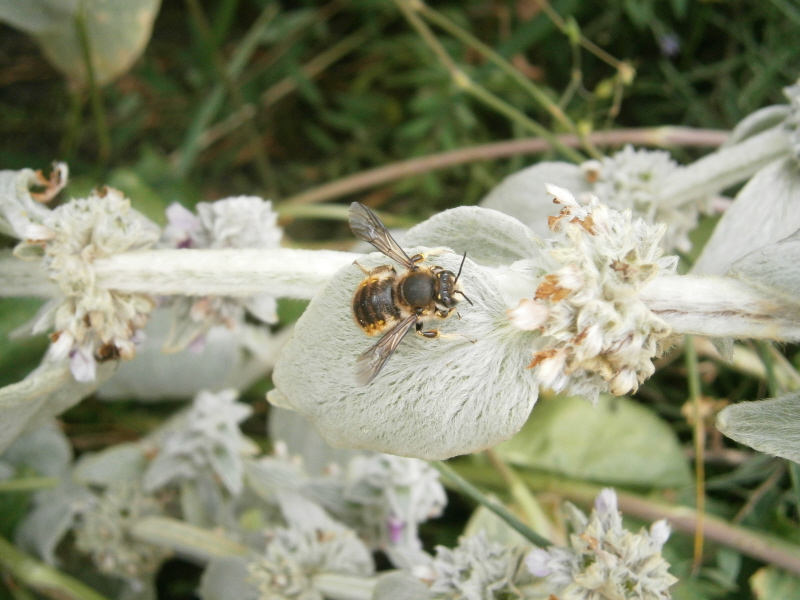
15 Jul Bees on Lamb’s Ears
Bee Summer
This has been a busy summer for the garden with new insect species challenging my identification skills.
The latest visitors are four wool carder bees. All our bee charts, and my BTO garden record scheme, mention the Common Carder bee but a wool carder? I have found it helps to photograph each new insect and then I am able to work patiently through identification charts. With the wool carder bee, their very distinctive pattern of yellow spots down their sides is a key. It helped that they were using one of their apparently favourite plants – Lamb’s ears or Stachys. They remind me a little of rather racy bikes – hovering noisily and then accelerating at speed towards a flower. It is a distinctive flight pattern and I can now recognise them from their jizz.
They are such fascinating visitors that I have had to find out more about them. Called wool carders for their habit of combing fibres from plants to use as nesting material, I can see why Stachys attracts them. I grow it for its lovely silky leaves; such a tactile plant. Apparently it is one of the few bee species where the male is larger than the female. I have both males and females in the group. Before I identified them I had wondered about their very aggressive tactics – they shot forward and ‘bombed’ other insects nectaring amongst the pink flowers. Now I see from the hugely informative Bumblebee Conservation Trust website that this is a ‘known characteristic.’
For several July afternoons I have been hovering around the Stachys, camera in hand, trying to catch these wool carders in action. But I haven’t seen a nest site. Apparently they raise one brood in holes in masonry or wood – plenty of both of those here. The hole is lined with the downy fibres they have carded from plants and the young emerge, eat the food they have been left, and start their new lives.
Welcome little wool carders to my bee friendly garden.
https://www.bumblebeeconservation.org


